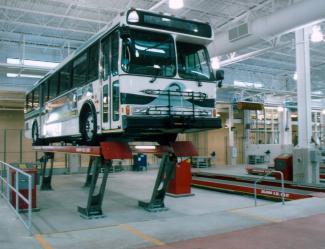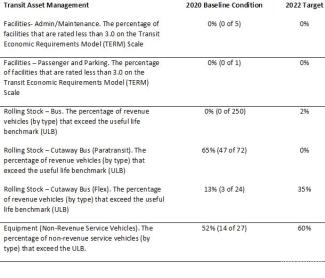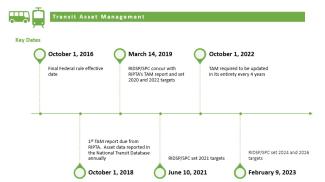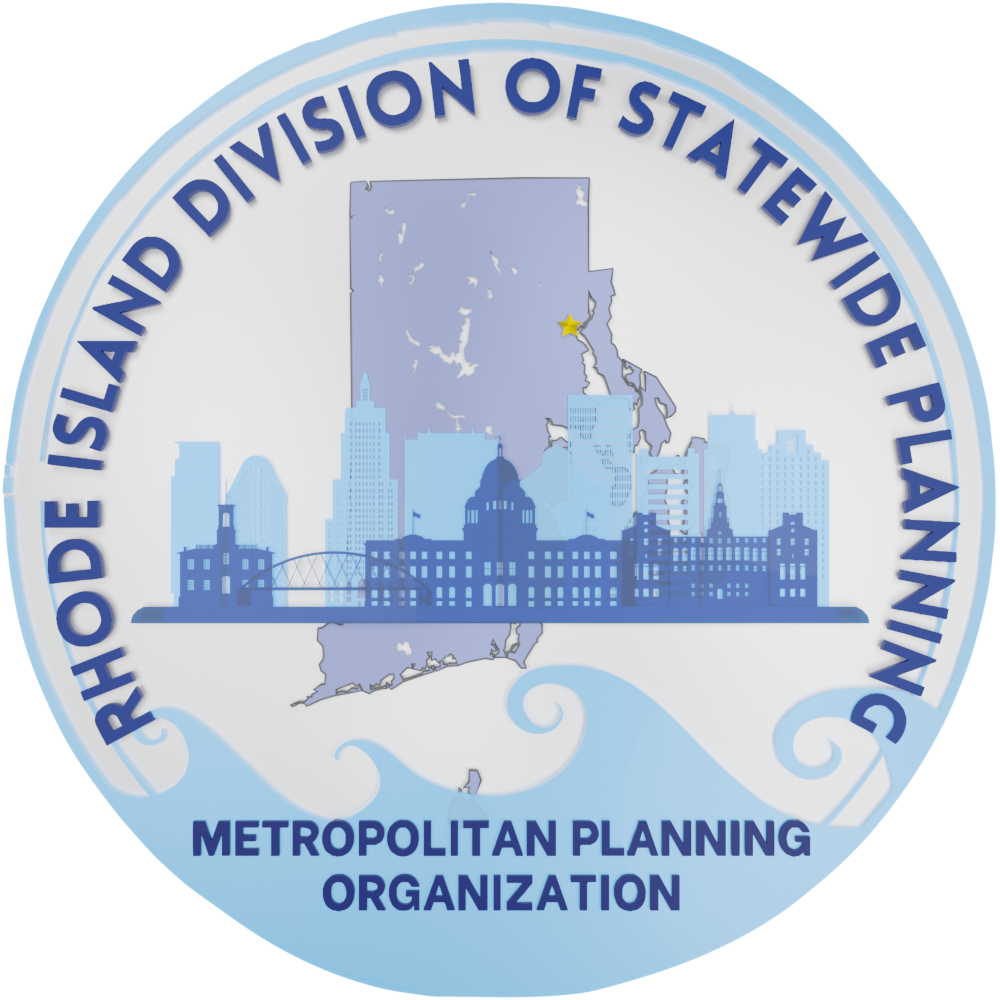Transit Asset Mangement
What Do We Measure?
Transit providers are required to coordinate with MPOs to set performance targets to assess the State of Good Repair for four capital asset categories. In Rhode Island the statewide bus transit provider is the Rhode Island Public Transit Authority (RIPTA). The providers are then required to develop a Transit Asset Management (TAM) Plan to identify local funding prioritization
The performance-based planning regulation requires that transit providers set annual targets for the average age of their revenue generating vehicles (rolling stock) for each of 23 vehicle types. The targets specify the percentage of the transit provider’s rolling stock that exceeds (is older than) the Useful Life Benchmark (ULB) measured in years. The ULB is established by the transit provider with Federal Transit Agency (FTA) guidance. Specific targets are set for:
Percentage of the transit provider’s rolling stock that have met or exceeded their ULB.
Transit providers are required to set annual targets for the average age of their nonrevenue generating vehicles (equipment) for three vehicle types: automobiles, rubber-tired vehicles, and steel wheeled vehicles. Targets are only set for vehicles that are road-worthy, self-propelled maintenance or construction vehicles. The targets are set for the percentage of equipment, by vehicle category type, that exceed the nonrevenue generating fleet’s ULB. Specific targets are set for:
Percentage of the transit provider’s support (nonrevenue) equipment that have met or exceeded their ULB.
Transit providers are required to set annual targets for the percentage of fixed guideway track segments that have performance restrictions. A performance restriction is defined as a segment of guideway track miles where the maximum permissible speed of transit vehicles is below the guideway’s full-service speed. Restrictions can be caused by issues with rail fixed guideway, track, power, or signal systems. Performance restrictions should be measured at 9:00 AM local time on the first Wednesday of each month.
Specific targets are set for:
- Percentage of the transit provider’s fixed guideway track miles that have performance restrictions. The annual performance measure for Infrastructure is an average of each month’s performance restriction measure.
Transit providers are required to set annual targets for the percentage of facilities (by group) that are rated less than 3.0 on the Transit Economic Requirements Model (TERM) Scale. The two groups of facility types are Passenger and Administration Facilities. FTA requires that facility condition data be fully updated every four years, at a minimum. Agencies may choose to assess a quarter of their facilities every year, or more frequently. Each annual report must include updated facility condition data based on any assessments completed since the last report. Only facilities with direct capital responsibility require condition assessments.

Specific targets are set for:
- Percentage of assets with condition rating below 3.0 on the FTA TERM Scale for Passenger Facilities.
- Percentage of assets with condition rating below 3.0 on the FTA TERM Scale for Administration Facilities.
MPOs may either establish quantitative targets for their metropolitan planning area or agree to adopt the respective transit agencies’ targets. The Rhode Island MPO/State Planning Council has adopted and supports RIPTA’s targets as the transit agency’s targets.

What Are the Targets?
The Rhode Island State Planning Council/MPO is consistent with respect to RIPTA’s annual transit asset management targets, and support’s RIPTA’s efforts at achieving those targets.
How Are We Doing?
Transit agencies must demonstrate whether they are meeting the performance targets set forward in the agency’s TAM Plan. MPOs may set their own targets or adopt the transit agency targets. MPOs are also required to demonstrate how funding will be allocated to assist the transit agencies meet the TAM targets. The Rhode Island State Planning Council/ MPO supports RIPTA’s targets.
To meet the performance measurement targets, the annual performance measures must meet or exceed the established target for the transit agency’s fiscal year. There are no penalties associated with not meeting the TAM targets, but the annual performance measure tracking effort does help indicate where there are investments needed in transit assets to maintain the system in a state of good repair.
Rhode Island publishes the TAM performance measures in the State Transportation Improvement Program (STIP) along with a list of STIP-funded projects that will support the transit agency’s targets.

Note on Other Transit Operations:
Rhode Island is served by two passenger rail services – the Massachusetts Bay Transportation Authority (MBTA) and Amtrak operating on 50 miles of passenger rail in the state. The Northeast Corridor rail line in Rhode Island is owned and maintained by Amtrak. The MBTA and Amtrak manage asset condition performance for their respective transit operations.
Key Dates

